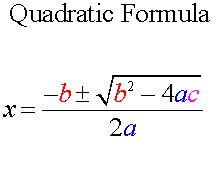

Thank you very much and keep up the good work."Įach month a newsletter is published containing details of the new additions to the Transum website and a new puzzle of the month.

It is lovely to have so many different ideas to start a lesson with. "Just a quick note to say that we use a lot of your starters. Keep up the good work"Ĭomment recorded on the 14 October 'Starter of the Day' page by Inger Kisby, Herts and Essex High School: "Find the starters wonderful students enjoy them and often want to use the idea generated by the starter in other parts of the lesson.

AreĬomment recorded on the 24 May 'Starter of the Day' page by Ruth Seward, Hagley Park Sports College: The people who enjoy how mystifying, puzzling and hard it is. The answer can also be written as, if rationalized.Mathematicians are not the people who find Maths easy they are

Solve for x: Don't forget that you must include a ± sign when square rooting both sides of any equation. Add that value to both sides of the equation: Half of the x‐term's coefficient squared. Move the constant so it alone is on the right side:ĭivide everything by the leading coefficient, since it's not 1: Take the square roots of both sides of the equation, remembering to add the “±” symbol on the right side.Įxample 3: Solve the quadratic equation by completing the square. Write the left side of the equation as a perfect square.ĥ. Add the constant value to both sides of the equation.Ĥ. If a ≠ 1, divide the entire equation by a.ģ. In other words, move only the constant term to the right side of the equation.Ģ. The most complicated, though itself not very difficult, technique for solving quadratic equations works by forcibly creating a trinomial that's a perfect square (hence the name). Note that the quadratic formula technique can easily find irrational and imaginary roots, unlike the factoring method. You can also write the answers as, the result of multiplying the numerators and denominators of both by −1. The coefficients for the quadratic formula are a = −4, b = 6, and c = −1: You should memorize the quadratic formula if you haven't done so already. A word of warning: Make sure that the quadratic equation you are trying to solve is set equal to 0 before plugging the quadratic equation's coefficients a, b, and c into the formula. This method is especially useful if the quadratic equation is not factorable. If an equation can be written in the form ax 2 + bx + c = 0, then the solutions to that equation can be found using the quadratic formula: Plug each answer into the original equation to ensure that it makes the equation true.Īdd 13 x 2and −10 x to both sides of the equation:įactor the polynomial, set each factor equal to 0, and solve.īecause all three of these x‐values make the quadratic equation true, they are all solutions. Set each factor equal to 0 and solve the smaller equations.Ĥ. Move all non‐zero terms to the left side of the equation, effectively setting the polynomial equal to 0.ģ. To solve a quadratic equation by factoring, follow these steps:ġ.
#QUADRATIC FORMULA HOW TO#
Of those two, the quadratic formula is the easier, but you should still learn how to complete the square. The other two methods, the quadratic formula and completing the square, will both work flawlessly every time, for every quadratic equation. The easiest, factoring, will work only if all solutions are rational. There are three major techniques for solving quadratic equations (equations formed by polynomials of degree 2).


 0 kommentar(er)
0 kommentar(er)
